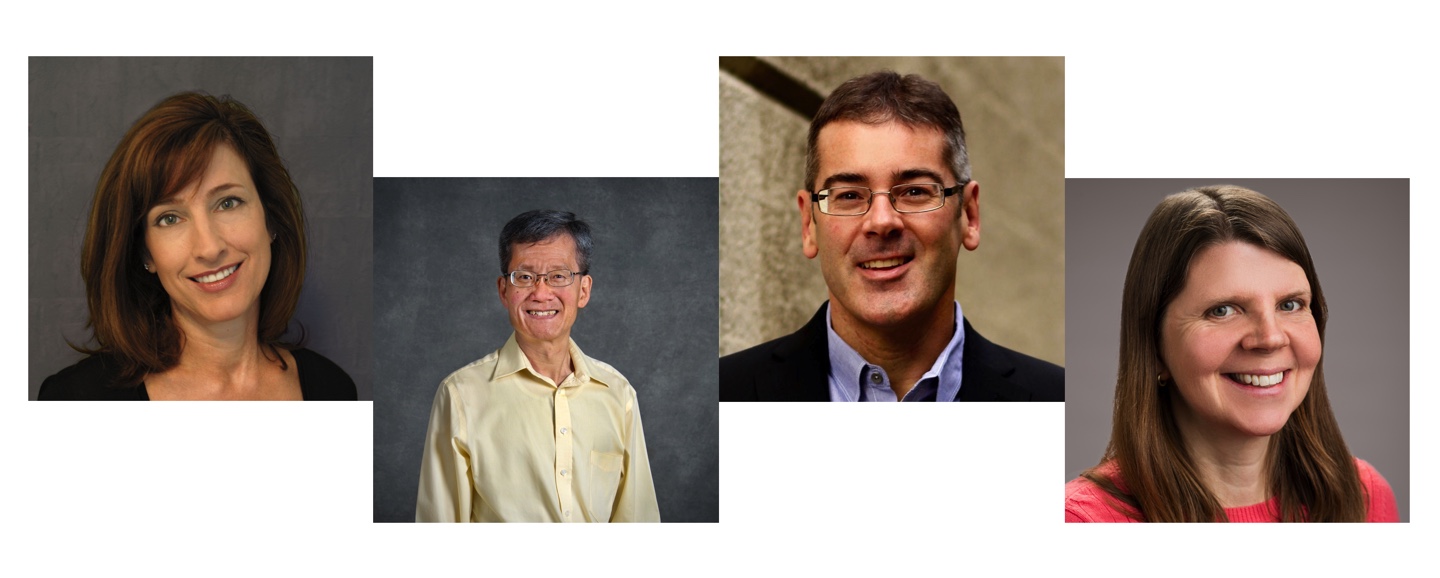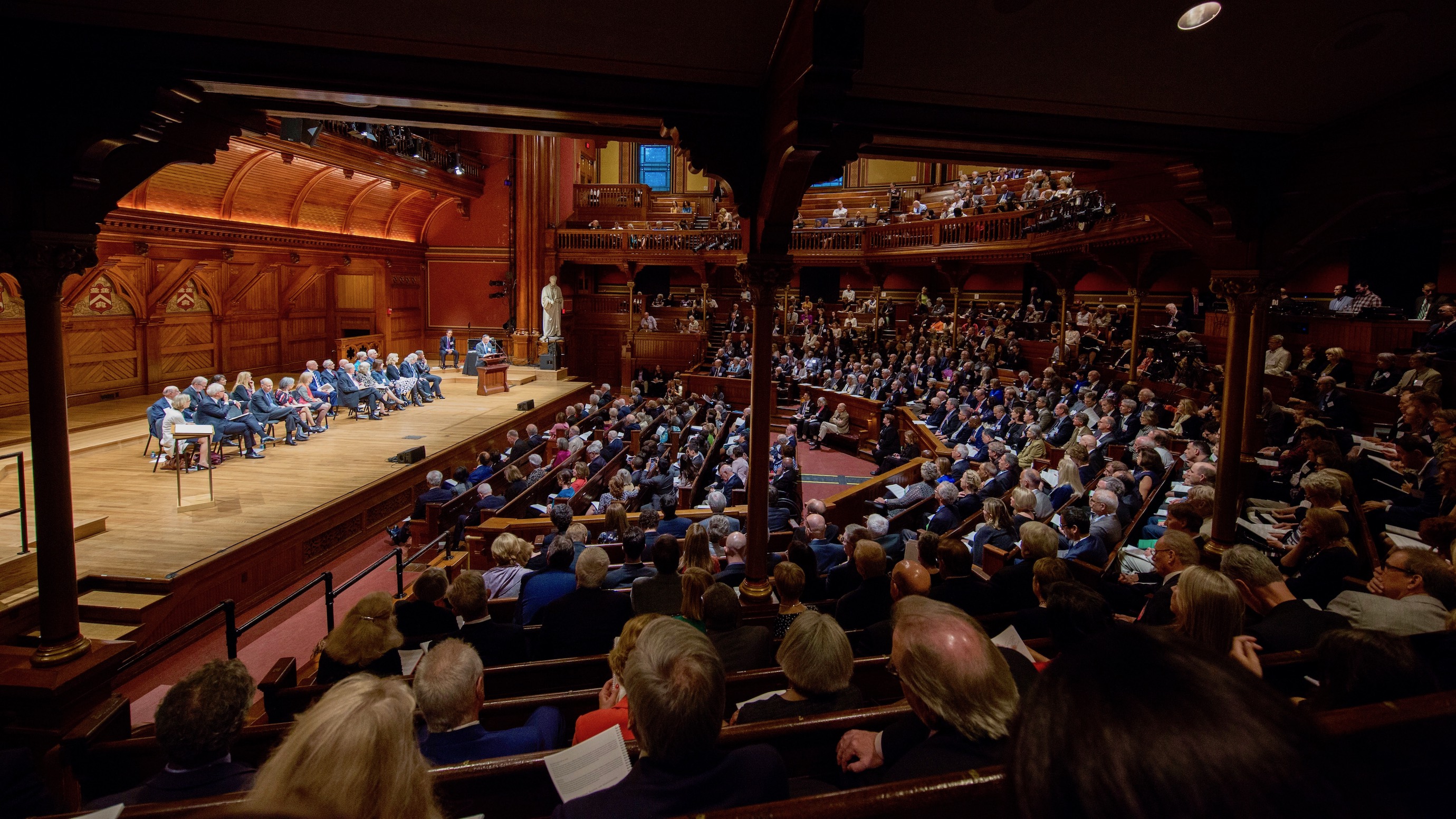
From left to right: Susan Hubbard, Kam-Biu Luk, Jeffrey Long, and Claire Tomlin. (Credit: Berkeley Lab/UC Berkeley)
Four Lawrence Berkeley National Laboratory (Berkeley Lab) scientists have been elected to the American Academy of Arts and Sciences, a prestigious, 239-year old honorary society that recognizes accomplished scholars, scientists and artists in academia, the humanities, arts, business, and government. A bit like Berkeley Lab itself, the Academy also serves as a nonpartisan research center focused on addressing the nation’s greatest scientific and social problems through cross-disciplinary collaboration of its expert members.
Among the 200-plus new lifetime members announced this week are:
Susan Hubbard, Associate Laboratory Director of the Earth & Environmental Sciences Area and senior scientist at Berkeley Lab. Hubbard is a leading expert in quantifying the hydrological and biogeochemical behavior of environmental systems. She is being recognized for her research in developing new geophysical approaches that have provided new insights about processes relevant to contaminant remediation, carbon cycling and water resources – insights that are helping us tackle some of the most pressing challenges of our time. Hubbard is also an adjunct professor in the Department of Environmental Science, Policy, and Management at UC Berkeley.
Kam-Biu Luk, senior faculty scientist, Physics Division, and a professor of physics at UC Berkeley. Luk is a particle physicist who is studying neutrino oscillations using electron antineutrinos produced by the Daya Bay nuclear power complex in China. To resolve other longstanding questions about neutrinos, he is participating in the upcoming Deep Underground Neutrino Experiment (DUNE) experiment, which will use a massive detector facility built deep underground in the Sanford Underground Research Facility, South Dakota, to observe intense (anti)neutrino beams sent from Fermi National Accelerator Laboratory, near Chicago.
Jeffrey Long, senior faculty scientist, Materials Sciences Division, and professor of chemistry and chemical and biomolecular engineering at UC Berkeley. Long’s research focuses on the design and synthesis of unique inorganic materials and molecules that both advance our understanding of new physical phenomena and have potential applications in gas storage, molecular separations, conductivity, catalysis, and magnetism.
Claire Tomlin, biological faculty engineer, Biological Systems and Engineering Division, and a professor of electrical engineering and computer sciences at UC Berkeley. Her research, which is currently conducted primarily at UC Berkeley, explores hybrid systems: complex systems which have discrete event dynamics as well as continuous time dynamics. Her group studies many topics and problems that can be modeled by hybrid systems as well as more general robotics, such as air traffic control automation, algorithms for decentralized optimization, modeling and analysis of biological cell networks, and unmanned aerial vehicle design and control.

An induction ceremony for new members. (Credit: American Academy of Arts and Sciences)
In addition to these four scientists, the Academy’s 2019 new member class includes three individuals with ties to Berkeley Lab:
Jo Handelsman, Director of the Director of the Wisconsin Institute for Discovery at the University of Wisconsin-Madison. Handelsman was recognized for her studies on the genetic and biochemical processes underlying interactions within plant and human microbiomes and for her advisory and leadership work as the past Associate Director for Science at the White House Office of Science and Technology Policy. She is a member of Berkeley Lab’s Advisory Board.
Rachel Segalman, a former Acting Director of the Materials Science Division and longtime faculty scientist at Berkeley Lab, now serving as the department chair of Chemical Engineering at UC Santa Barbara. Segalman’s research group explores the how the functionality and properties of biological materials are affected by structure at different scales, and how structure can be exploited or controlled to produce materials of interest for photovoltaics, fuel cells, and thermoelectrics.
Yifan Cheng, professor of biochemistry and biophysics at UC San Francisco. Cheng and his team use cryo-electron microscopy (cryoEM) to discover the 3D atomic structures of macromolecular complexes, which may then inform investigations of their function and how they assemble and disassemble. Cheng helped develop and test direct electron detecting cameras for cryo-EM microscopes, a technology that has revolutionized the resolution and efficiency of cryo-EM in the past decade. These cameras are based on research led by Peter Denes of Berkeley Lab and Cheng’s UCSF colleague David Agard.